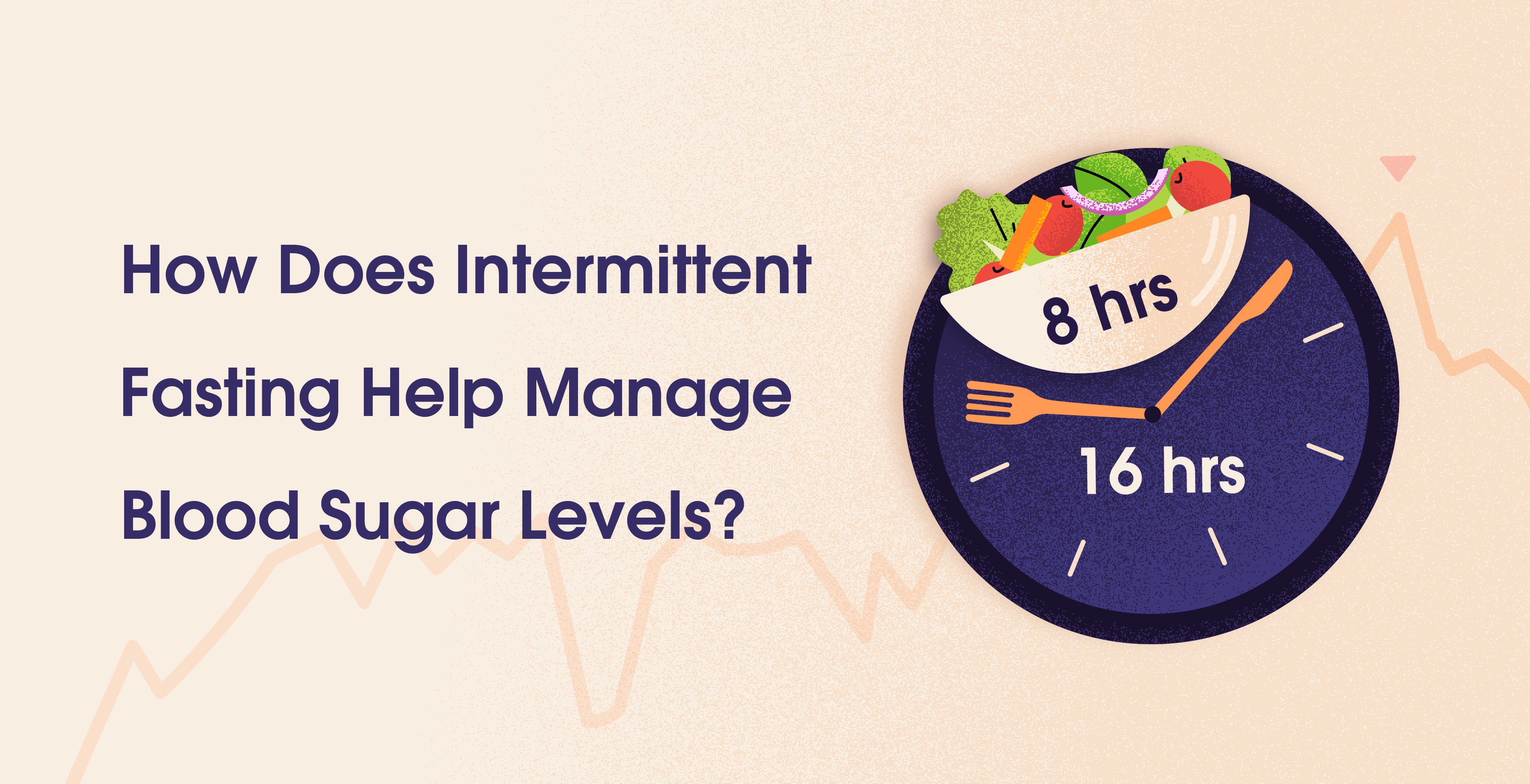Understanding HbA1c: Your First Step To Prediabetes Management
Jan 14, 2024
Ashima Raizada
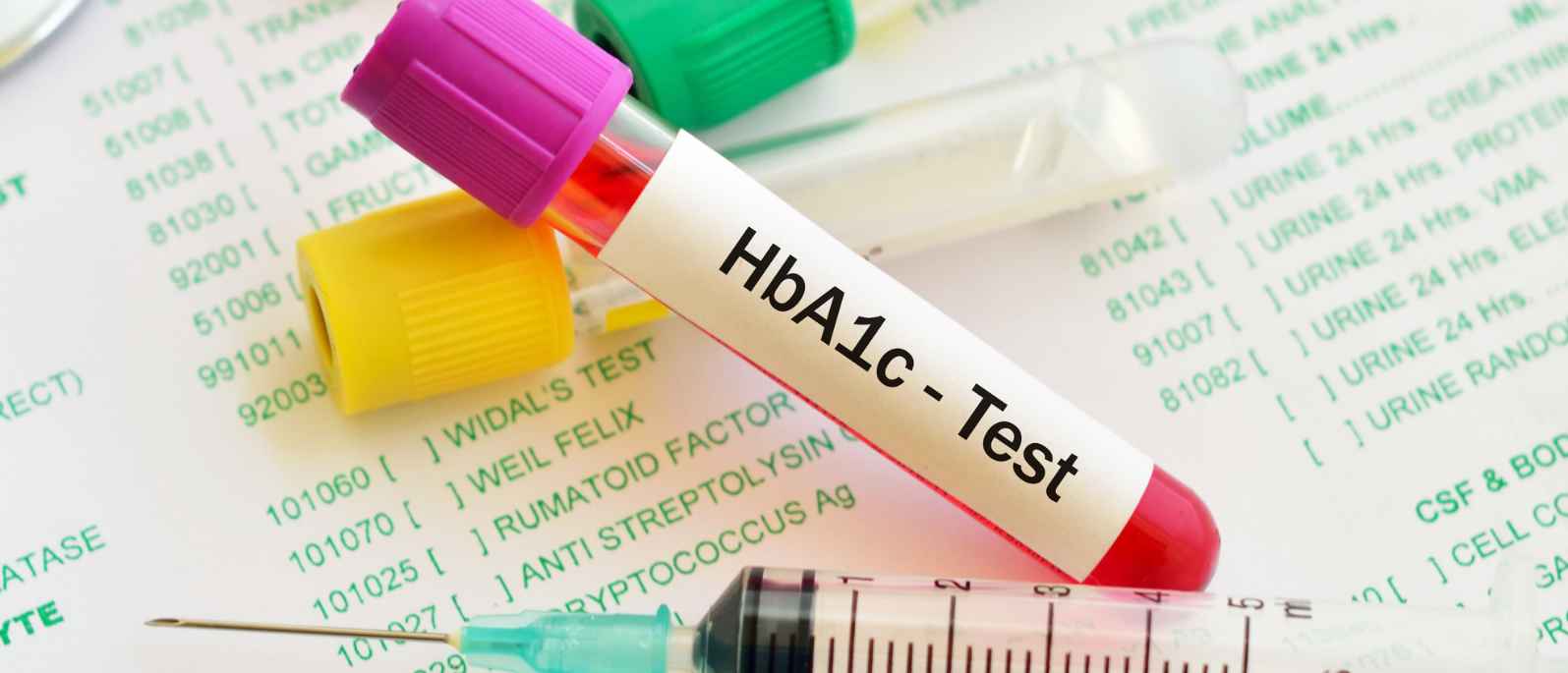


Table Of Contents
If you are grappling with prediabetes, your doctor will likely recommend an HbA1c test. It's the first test they recommend before all the other blood work comes your way. This test not only gives you a heads up if you're in the 'almost-diabetes' zone but also helps you understand how well your blood sugar is being controlled.
Understanding HbA1c can be a challenge, especially if you've just been diagnosed with prediabetes. Deciphering it can seem overwhelming but once you come out the other end, it'll be your secret to blood sugar control. So, hold onto that curiosity as we talk about everything you need to know about HbA1c. We'll tell you its significance, how it relates to prediabetes, and why keeping an eye on it is your proactive ticket to a healthier future.
Highlights
HbA1c test is your early warning system for prediabetes and diabetes risk
It's a simple process with a quick blood sample and no fasting needed
Normal HbA1c is below 5.7%, prediabetes is 5.7%-6.4% and diabetes 6.5% or higher
Lifestyle improvements such as changes in what, how, and when you eat, improvement in sleep, circadian rhythm, and stress, and exercising are keys to managing blood sugar
Make sure to speak to a healthcare provider, stay consistent, and re-test your levels
Understanding the HbA1C Blood Test
The HbA1c test, or glycated hemoglobin test, provides a longer-term perspective on blood sugar control compared to daily fingerstick tests. It measures the percentage of hemoglobin that has glucose attached to it over the past two to three months. This period reflects the average lifespan of red blood cells in the body.
The Science Behind HbA1C
Let's simplify this. Hemoglobin is a protein found in red blood cells that carries oxygen. Glucose, a carbohydrate and the fundamental sugar in your body, sticks to hemoglobin to form HbA1c. This means your hemoglobin is now glycosylated.
After meals, food is broken down into glucose for your body to derive energy from. Increasing glucose in the bloodstream triggers the pancreas to release insulin to balance your now increased blood sugar. But when you're prediabetic, there's a glitch because your cells are more resistant to insulin and the amount of insulin released by your pancreas can't keep up with all the glucose in your blood.
As your blood sugar rises, your hemoglobin becomes more glycosylated (more glucose coating on your hemoglobin proteins). The A1C test measures the amount of glycosylated hemoglobin in your blood.
Red blood cells last three months along with their glucose coating. High A1C levels point towards more glucose around your hemoglobin, meaning you're headed towards prediabetes and eventually diabetes. Recommended by WHO, the A1C test is now a standard for testing diabetes.
But don't stress just yet - with care and lifestyle changes, you can control blood glucose, avoiding issues like heart and kidney problems. Your body informs you very much in advance of these changes and knowledge is your power in managing blood sugar. (1)
So, why bother with the HbA1C test?
This is your early warning system! It's quick, relatively painless and very informative - especially if you're under 45 and might be overlooking other, sneaky prediabetes symptoms. If you're over 45, think of it as your routine check to keep tabs on potential blood sugar troubles. This test is your guardian against the silent progression towards diabetes. Keep in mind that A1C testing serves as a valuable tool in managing and preventing diabetes, offering insights tailored to your specific risk factors and health conditions.
What happens during the HbA1c Test?
When you're ready for the HbA1c test, it's a breeze. No fasting or strange conditions are required. Your healthcare provider takes a small blood sample, usually from your arm. It's a quick pitstop in your wellness journey, and you can resume your daily activities immediately after. Easy, right?
What do my HbA1C test results mean?
Let's break down your HbA1c test results. A normal level is below 5.7%, indicating smooth sailing for your blood sugar. If you fall between 5.7% and 6.4%, you're in the prediabetes club - a nudge to take control and shift towards a healthier lifestyle. Hit 6.5% or higher, and diabetes knocks on the door. But remember, it's a signal, not a sentence. Check out this brief video explaining ideal blood sugar levels:
What is the HbA1C Test Used For?
The Centers for Disease Control (CDC) suggests considering A1C testing for diabetes and prediabetes under certain conditions:
A1C Testing for Type 2 Diabetes
In type 2 diabetes, your blood glucose levels spike because your body either doesn't produce enough insulin (later diabetes stages) to move sugar into your cells or your cells become unresponsive to insulin (which is usually the case).
A1C Testing for Prediabetes
Prediabetes indicates elevated blood glucose levels, not high enough for a diabetes diagnosis. Lifestyle adjustments, like adopting a healthy diet and incorporating exercise, might delay or prevent the progression from prediabetes to type 2 diabetes.
Monitoring Diabetes or Prediabetes with A1C
For those with diabetes or prediabetes, an A1C test serves as a useful tool to track your condition and assess how effectively you've managed to control your blood sugar levels. It's like a periodic check-in on your metabolic health. (2)
Is The HbA1C test an accurate measure of blood sugar levels for prediabetes?
The HbA1c test, while valuable, can be influenced by various factors beyond prediabetes or diabetes. Consider these reasons for potential fluctuations:
Your Health Status
If you're unwell, especially with conditions affecting your red blood cells, it can impact HbA1c results.
Medications
Certain medications, like steroids, can influence HbA1c levels, so it's crucial to communicate your medications to your healthcare team.
Lifestyle Changes
Alterations in your lifestyle, such as changes in diet or exercise routines, may affect HbA1c readings.
Your Emotional Well-being
Mental health plays a role; feeling very stressed or experiencing depression can contribute to changes in HbA1c levels. Keep in mind that these are long-term issues that are persistent over weeks or months. Feeling stressed on the day of your A1C test will not affect the outcome.
Navigating your target HbA1c level requires collaboration with your healthcare team. Though it might seem challenging, maintaining this target is vital. Prolonged elevation, even if only slightly high, escalates the risk of severe complications. So, while it's not a walk in the park, actively managing your HbA1c level remains a critical step in safeguarding your long-term health.
Is the HbA1c test more accurate than your finger prick test kits at home?
Finger-prick tests used to measure blood sugar regularly are a great alternative to knowing your daily, weekly, or monthly sugar levels. But if you have symptoms of prediabetes, your doctor or physician is likely to recommend the HbA1c to get an idea of your blood sugar levels over a period of time. The HbA1c test and the finger-prick test serve different purposes:
HbA1c Test
Measures average blood sugar levels over the past 2 to 3 months for a holistic picture
Recommended for everyone with prediabetes or diabetes
Generally performed every 3 to 6 months
Generally conducted by a healthcare professional since it Involves drawing blood from the arm
Used by doctors to see how well someone is managing their prediabetes or diabetes and to assess risk of type 2 diabetes
Finger-Prick Test
Offers a real-time reading of blood sugar levels at a given point
Required for individuals taking diabetes medicines like insulin and sulfonylureas
Taken multiple times a day, ranging from 2 to 10 times, depending on the requirement
Can be done at home easily with a kit using a small drop of blood
Mostly for people with diabetes
While the HbA1c test aids in assessing long-term diabetes management and risk, the finger-prick test provides immediate insights for those on certain medications and for immediate management of insulin dosing. Both contribute valuable data to the intricate landscape of diabetes care but it boils down to what information you are seeing at that moment.
When Do You Need The HbA1C test?
The Centers for Disease Control (CDC) suggest A1C testing for diabetes and prediabetes under specific circumstances:
If You Are Over Age 45
If your results are within the normal range, consider repeating the test every 3 years
In the case of prediabetes, expect testing every 1 to 2 years. Consult your healthcare provider for personalized advice on frequency and risk reduction strategies
If diabetes is detected, aim for at least two A1C tests annually to monitor your condition and treatment progress
If You Are Under 45 and At Risk for Diabetes
Presence of prediabetes
Being overweight or obese
Having a parent or sibling with type 2 diabetes
High blood pressure or high cholesterol levels
History of heart disease or stroke
Engaging in physical activity less than 3 times a week
Previous experience with gestational diabetes or giving birth to a baby over 9 pounds
Being African American, Hispanic or Latino, American Indian, or an Alaska Native. Some Pacific Islander and Asian American individuals also face a higher risk
Diagnosis of polycystic ovarian syndrome (PCOS)
If You Experience The Following Symptoms of Diabetes or Prediabetes
Excessive thirst
Frequent urination
Unintended weight loss
Persistent hunger
Blurred vision
Numb or tingling hands or feet
Fatigue
Dry skin
Slow-healing sores
Increased susceptibility to infections
How to Lower Your HbA1c Levels and how long does it take?
Navigating the journey to lower your HbA1c levels is like embarking on a personalized expedition toward better blood sugar management. It's important to remember that the timeline for this process isn't set in stone, as individual responses can vary. Here's a nuanced look at how to approach reducing your HbA1c:
Focus on Nutrition
Being mindful of what, how, and when we eat it can change your blood sugar levels for good. If your HbA1c levels are elevated, you need to prioritize whole foods rich in protein and fiber. Here are a few other things you can consider:
a) Eating foods in the right order:
Just a simple shift in the order of your food consumption can change how your blood sugar fluctuates. If you eat fiber first, then proteins and fats, and then carbs, starches, and sugars, your blood sugar will remain steady. Don't believe us? Try it for yourself.
b) Intermittent fasting:
We know you've heard a lot about intermittent fasting. Before you dismiss it, hear us out. Studies have shown that intermittent fasting can improve glycemic control, reduce insulin resistance, promote weight loss, and lower your risk of cardio-metabolic diseases. (3) Usually an 8-12 hour eating window is the easiest and most effective. It's all about syncing your meal timing with your body's natural rhythm. So remember never to skip breakfast and wrap up your dinner at least 3 to 4 hours before bedtime to help your hormones do their thing.
c) Choosing the right foods:
Prioritize whole, nutrient-dense foods over processed options. Opt for lean proteins, high-fiber vegetables, and healthy fats. Minimize the intake of refined carbohydrates and sugars. By making these informed food choices, you support overall health and contribute to better blood sugar management.
Pro-tip: Make breakfast savory, fiber, and protein-rich!
Get Moving
Embrace physical exercise - it's a game-changer for prediabetes and a barrier against its progression to diabetes. When you work out, your body taps into glucose, enhancing its absorption by cells and lowering elevated blood sugar. Combine strength training with enjoyable aerobic activities like dancing or swimming for effective glucose utilization by your muscles. Bonus: This aids in weight management, a win for prediabetes. Anytime works for a workout, but avoid intense activity before bed to keep cortisol levels in check. (4)
Pro-tip: Choose activities you enjoy, even a post-meal walk can regulate blood sugar.
Circadian Rhythm & Sleep Fixes
Beyond regulating your sleep, the circadian rhythm plays a crucial role in shaping your hormonal activity, particularly those related to sleep and hunger. A disruption in this rhythm, coupled with sleep disturbances, can lead to heightened carb cravings, binge eating, and an increased sense of hunger. The culprits? Hunger hormones, namely leptin, and ghrelin, go haywire. This imbalance doesn't just stop there - it contributes to impaired glucose metabolism, elevating your diabetes risk. To reset your circadian rhythm and safeguard your health:
Prioritize 7-9 hours of sleep tailored to your individual needs, ensuring you wake up feeling refreshed.
Soak in the morning sunlight to reinforce your body's natural rhythm.
Cease eating at least 3-4 hours before bedtime to support a restful night's sleep.
Steer clear of bright lights in the evening, signaling to your body that it's time to wind down.
Opt for a light dinner, easing the digestive process before bedtime.
Limit caffeine intake after 2 PM to prevent interference with your sleep.
Reserve strenuous exercise for earlier in the day, allowing your body to transition into a more relaxed state in the evening.
Managing Stress
Effectively managing stress is important to lower your HbA1c levels. While complete stress elimination is impossible, the key lies in acquiring coping mechanisms.
Incorporate stress-relief practices into your daily routine, such as journaling, meditation, yoga, and deep-breathing exercises. These approaches are impactful in reducing cortisol, the stress hormone, and promoting effective stress management.
Additionally, don't underestimate the rejuvenating power of soaking in the morning sun. Taking time to relax and recharge in the morning can alleviate stress and provide a healthy boost to cortisol levels.
Monitor Alcohol Consumption
Keeping a close eye on alcohol intake is integral to prediabetes management. Adhering to moderation, as recommended by the American Diabetes Association, involves limiting yourself to one daily drink if you're a woman or a man. Whether it's a small glass of wine, a beer can, or a shot of liquor, surpassing these limits significantly elevates the risk of transitioning to type 2 diabetes.
Quit Smoking
Smoking poses a considerable obstacle to reversing prediabetes. Tobacco use increases the risk of progressing to type 2 diabetes by 30% to 40% compared to non-smokers, and this risk escalates with increased smoking. If your goal is to improve your health and bid farewell to prediabetes, quitting cigarettes is a crucial step. It's about providing your body with the best chance to heal and regain its balance.
Hydrate with Water
Incorporating increased water intake into your routine complements other lifestyle changes in warding off diabetes. Studies indicate that individuals with prediabetes who implement strategies to manage it experience significant improvements in their blood sugar levels compared to those who don't. Water plays a role in flushing out excess glucose from the blood. When you maintain adequate hydration, your blood volume stays stable, while your sugar levels are better regulated.
Regular Monitoring
Consistent monitoring of your blood sugar levels, possibly through self-testing or continuous glucose monitors, offers insights into your progress and helps fine-tune your management plan.
Staying Consistent With Lifestyle Changes
Remember, changes take time and consistency. There's no universal timeframe and therefore consistency becomes the most important in managing your HbA1c levels. And quite frankly, it'll reflect on your test results.
Collaborate with Your Healthcare Team
Keep the conversation open with your healthcare team. Apart from giving you and managing your medication, they can provide guidance, monitor your progress, and make informed adjustments to your plan based on your unique responses. Check with them for DPP (Diabetes Prevention Programs) that support help with lifestyle interventions. In the United States, the Diabetes Prevention Program (DPP) trial provides substantial evidence supporting lifestyle interventions for preventing diabetes. The trial showcased that intensive lifestyle changes could lead to a remarkable 58% reduction in the risk of developing type 2 diabetes over a span of three years.
In essence, lowering your HbA1c is a holistic journey that integrates dietary choices, physical activity, potential medication adjustments, and ongoing monitoring. While timelines can differ, the commitment to long-term well-being remains constant. It's not about rapid changes; it's about sustainable practices that become part of your lifestyle. (5)
Conclusion
In a nutshell, managing prediabetes boils down to understanding and keeping tabs on your HbA1c levels. It's a mix of smart eating, staying active with things you enjoy, syncing with your body's rhythm, and managing stress. Watch your alcohol and kick the smoking habit. Stay hydrated, monitor your blood sugar, and be consistent. It's not a sprint; it's a long-term commitment to feeling good and healthy. Keep it simple, chat with your healthcare team, and build a lifestyle that's all about well-being!
References
Significance of HbA1c Test in Diagnosis and Prognosis of Diabetic Patients - PMC
Role of Intermittent Fasting in the Management of Prediabetes and Type 2 Diabetes Mellitus - PMC
The essential role of exercise in the management of type 2 diabetes - PMC
Standards of Medical Care in Diabetes - 2022 Abridged for Primary Care Providers
If you are grappling with prediabetes, your doctor will likely recommend an HbA1c test. It's the first test they recommend before all the other blood work comes your way. This test not only gives you a heads up if you're in the 'almost-diabetes' zone but also helps you understand how well your blood sugar is being controlled.
Understanding HbA1c can be a challenge, especially if you've just been diagnosed with prediabetes. Deciphering it can seem overwhelming but once you come out the other end, it'll be your secret to blood sugar control. So, hold onto that curiosity as we talk about everything you need to know about HbA1c. We'll tell you its significance, how it relates to prediabetes, and why keeping an eye on it is your proactive ticket to a healthier future.
Highlights
HbA1c test is your early warning system for prediabetes and diabetes risk
It's a simple process with a quick blood sample and no fasting needed
Normal HbA1c is below 5.7%, prediabetes is 5.7%-6.4% and diabetes 6.5% or higher
Lifestyle improvements such as changes in what, how, and when you eat, improvement in sleep, circadian rhythm, and stress, and exercising are keys to managing blood sugar
Make sure to speak to a healthcare provider, stay consistent, and re-test your levels
Understanding the HbA1C Blood Test
The HbA1c test, or glycated hemoglobin test, provides a longer-term perspective on blood sugar control compared to daily fingerstick tests. It measures the percentage of hemoglobin that has glucose attached to it over the past two to three months. This period reflects the average lifespan of red blood cells in the body.
The Science Behind HbA1C
Let's simplify this. Hemoglobin is a protein found in red blood cells that carries oxygen. Glucose, a carbohydrate and the fundamental sugar in your body, sticks to hemoglobin to form HbA1c. This means your hemoglobin is now glycosylated.
After meals, food is broken down into glucose for your body to derive energy from. Increasing glucose in the bloodstream triggers the pancreas to release insulin to balance your now increased blood sugar. But when you're prediabetic, there's a glitch because your cells are more resistant to insulin and the amount of insulin released by your pancreas can't keep up with all the glucose in your blood.
As your blood sugar rises, your hemoglobin becomes more glycosylated (more glucose coating on your hemoglobin proteins). The A1C test measures the amount of glycosylated hemoglobin in your blood.
Red blood cells last three months along with their glucose coating. High A1C levels point towards more glucose around your hemoglobin, meaning you're headed towards prediabetes and eventually diabetes. Recommended by WHO, the A1C test is now a standard for testing diabetes.
But don't stress just yet - with care and lifestyle changes, you can control blood glucose, avoiding issues like heart and kidney problems. Your body informs you very much in advance of these changes and knowledge is your power in managing blood sugar. (1)
So, why bother with the HbA1C test?
This is your early warning system! It's quick, relatively painless and very informative - especially if you're under 45 and might be overlooking other, sneaky prediabetes symptoms. If you're over 45, think of it as your routine check to keep tabs on potential blood sugar troubles. This test is your guardian against the silent progression towards diabetes. Keep in mind that A1C testing serves as a valuable tool in managing and preventing diabetes, offering insights tailored to your specific risk factors and health conditions.
What happens during the HbA1c Test?
When you're ready for the HbA1c test, it's a breeze. No fasting or strange conditions are required. Your healthcare provider takes a small blood sample, usually from your arm. It's a quick pitstop in your wellness journey, and you can resume your daily activities immediately after. Easy, right?
What do my HbA1C test results mean?
Let's break down your HbA1c test results. A normal level is below 5.7%, indicating smooth sailing for your blood sugar. If you fall between 5.7% and 6.4%, you're in the prediabetes club - a nudge to take control and shift towards a healthier lifestyle. Hit 6.5% or higher, and diabetes knocks on the door. But remember, it's a signal, not a sentence. Check out this brief video explaining ideal blood sugar levels:
What is the HbA1C Test Used For?
The Centers for Disease Control (CDC) suggests considering A1C testing for diabetes and prediabetes under certain conditions:
A1C Testing for Type 2 Diabetes
In type 2 diabetes, your blood glucose levels spike because your body either doesn't produce enough insulin (later diabetes stages) to move sugar into your cells or your cells become unresponsive to insulin (which is usually the case).
A1C Testing for Prediabetes
Prediabetes indicates elevated blood glucose levels, not high enough for a diabetes diagnosis. Lifestyle adjustments, like adopting a healthy diet and incorporating exercise, might delay or prevent the progression from prediabetes to type 2 diabetes.
Monitoring Diabetes or Prediabetes with A1C
For those with diabetes or prediabetes, an A1C test serves as a useful tool to track your condition and assess how effectively you've managed to control your blood sugar levels. It's like a periodic check-in on your metabolic health. (2)
Is The HbA1C test an accurate measure of blood sugar levels for prediabetes?
The HbA1c test, while valuable, can be influenced by various factors beyond prediabetes or diabetes. Consider these reasons for potential fluctuations:
Your Health Status
If you're unwell, especially with conditions affecting your red blood cells, it can impact HbA1c results.
Medications
Certain medications, like steroids, can influence HbA1c levels, so it's crucial to communicate your medications to your healthcare team.
Lifestyle Changes
Alterations in your lifestyle, such as changes in diet or exercise routines, may affect HbA1c readings.
Your Emotional Well-being
Mental health plays a role; feeling very stressed or experiencing depression can contribute to changes in HbA1c levels. Keep in mind that these are long-term issues that are persistent over weeks or months. Feeling stressed on the day of your A1C test will not affect the outcome.
Navigating your target HbA1c level requires collaboration with your healthcare team. Though it might seem challenging, maintaining this target is vital. Prolonged elevation, even if only slightly high, escalates the risk of severe complications. So, while it's not a walk in the park, actively managing your HbA1c level remains a critical step in safeguarding your long-term health.
Is the HbA1c test more accurate than your finger prick test kits at home?
Finger-prick tests used to measure blood sugar regularly are a great alternative to knowing your daily, weekly, or monthly sugar levels. But if you have symptoms of prediabetes, your doctor or physician is likely to recommend the HbA1c to get an idea of your blood sugar levels over a period of time. The HbA1c test and the finger-prick test serve different purposes:
HbA1c Test
Measures average blood sugar levels over the past 2 to 3 months for a holistic picture
Recommended for everyone with prediabetes or diabetes
Generally performed every 3 to 6 months
Generally conducted by a healthcare professional since it Involves drawing blood from the arm
Used by doctors to see how well someone is managing their prediabetes or diabetes and to assess risk of type 2 diabetes
Finger-Prick Test
Offers a real-time reading of blood sugar levels at a given point
Required for individuals taking diabetes medicines like insulin and sulfonylureas
Taken multiple times a day, ranging from 2 to 10 times, depending on the requirement
Can be done at home easily with a kit using a small drop of blood
Mostly for people with diabetes
While the HbA1c test aids in assessing long-term diabetes management and risk, the finger-prick test provides immediate insights for those on certain medications and for immediate management of insulin dosing. Both contribute valuable data to the intricate landscape of diabetes care but it boils down to what information you are seeing at that moment.
When Do You Need The HbA1C test?
The Centers for Disease Control (CDC) suggest A1C testing for diabetes and prediabetes under specific circumstances:
If You Are Over Age 45
If your results are within the normal range, consider repeating the test every 3 years
In the case of prediabetes, expect testing every 1 to 2 years. Consult your healthcare provider for personalized advice on frequency and risk reduction strategies
If diabetes is detected, aim for at least two A1C tests annually to monitor your condition and treatment progress
If You Are Under 45 and At Risk for Diabetes
Presence of prediabetes
Being overweight or obese
Having a parent or sibling with type 2 diabetes
High blood pressure or high cholesterol levels
History of heart disease or stroke
Engaging in physical activity less than 3 times a week
Previous experience with gestational diabetes or giving birth to a baby over 9 pounds
Being African American, Hispanic or Latino, American Indian, or an Alaska Native. Some Pacific Islander and Asian American individuals also face a higher risk
Diagnosis of polycystic ovarian syndrome (PCOS)
If You Experience The Following Symptoms of Diabetes or Prediabetes
Excessive thirst
Frequent urination
Unintended weight loss
Persistent hunger
Blurred vision
Numb or tingling hands or feet
Fatigue
Dry skin
Slow-healing sores
Increased susceptibility to infections
How to Lower Your HbA1c Levels and how long does it take?
Navigating the journey to lower your HbA1c levels is like embarking on a personalized expedition toward better blood sugar management. It's important to remember that the timeline for this process isn't set in stone, as individual responses can vary. Here's a nuanced look at how to approach reducing your HbA1c:
Focus on Nutrition
Being mindful of what, how, and when we eat it can change your blood sugar levels for good. If your HbA1c levels are elevated, you need to prioritize whole foods rich in protein and fiber. Here are a few other things you can consider:
a) Eating foods in the right order:
Just a simple shift in the order of your food consumption can change how your blood sugar fluctuates. If you eat fiber first, then proteins and fats, and then carbs, starches, and sugars, your blood sugar will remain steady. Don't believe us? Try it for yourself.
b) Intermittent fasting:
We know you've heard a lot about intermittent fasting. Before you dismiss it, hear us out. Studies have shown that intermittent fasting can improve glycemic control, reduce insulin resistance, promote weight loss, and lower your risk of cardio-metabolic diseases. (3) Usually an 8-12 hour eating window is the easiest and most effective. It's all about syncing your meal timing with your body's natural rhythm. So remember never to skip breakfast and wrap up your dinner at least 3 to 4 hours before bedtime to help your hormones do their thing.
c) Choosing the right foods:
Prioritize whole, nutrient-dense foods over processed options. Opt for lean proteins, high-fiber vegetables, and healthy fats. Minimize the intake of refined carbohydrates and sugars. By making these informed food choices, you support overall health and contribute to better blood sugar management.
Pro-tip: Make breakfast savory, fiber, and protein-rich!
Get Moving
Embrace physical exercise - it's a game-changer for prediabetes and a barrier against its progression to diabetes. When you work out, your body taps into glucose, enhancing its absorption by cells and lowering elevated blood sugar. Combine strength training with enjoyable aerobic activities like dancing or swimming for effective glucose utilization by your muscles. Bonus: This aids in weight management, a win for prediabetes. Anytime works for a workout, but avoid intense activity before bed to keep cortisol levels in check. (4)
Pro-tip: Choose activities you enjoy, even a post-meal walk can regulate blood sugar.
Circadian Rhythm & Sleep Fixes
Beyond regulating your sleep, the circadian rhythm plays a crucial role in shaping your hormonal activity, particularly those related to sleep and hunger. A disruption in this rhythm, coupled with sleep disturbances, can lead to heightened carb cravings, binge eating, and an increased sense of hunger. The culprits? Hunger hormones, namely leptin, and ghrelin, go haywire. This imbalance doesn't just stop there - it contributes to impaired glucose metabolism, elevating your diabetes risk. To reset your circadian rhythm and safeguard your health:
Prioritize 7-9 hours of sleep tailored to your individual needs, ensuring you wake up feeling refreshed.
Soak in the morning sunlight to reinforce your body's natural rhythm.
Cease eating at least 3-4 hours before bedtime to support a restful night's sleep.
Steer clear of bright lights in the evening, signaling to your body that it's time to wind down.
Opt for a light dinner, easing the digestive process before bedtime.
Limit caffeine intake after 2 PM to prevent interference with your sleep.
Reserve strenuous exercise for earlier in the day, allowing your body to transition into a more relaxed state in the evening.
Managing Stress
Effectively managing stress is important to lower your HbA1c levels. While complete stress elimination is impossible, the key lies in acquiring coping mechanisms.
Incorporate stress-relief practices into your daily routine, such as journaling, meditation, yoga, and deep-breathing exercises. These approaches are impactful in reducing cortisol, the stress hormone, and promoting effective stress management.
Additionally, don't underestimate the rejuvenating power of soaking in the morning sun. Taking time to relax and recharge in the morning can alleviate stress and provide a healthy boost to cortisol levels.
Monitor Alcohol Consumption
Keeping a close eye on alcohol intake is integral to prediabetes management. Adhering to moderation, as recommended by the American Diabetes Association, involves limiting yourself to one daily drink if you're a woman or a man. Whether it's a small glass of wine, a beer can, or a shot of liquor, surpassing these limits significantly elevates the risk of transitioning to type 2 diabetes.
Quit Smoking
Smoking poses a considerable obstacle to reversing prediabetes. Tobacco use increases the risk of progressing to type 2 diabetes by 30% to 40% compared to non-smokers, and this risk escalates with increased smoking. If your goal is to improve your health and bid farewell to prediabetes, quitting cigarettes is a crucial step. It's about providing your body with the best chance to heal and regain its balance.
Hydrate with Water
Incorporating increased water intake into your routine complements other lifestyle changes in warding off diabetes. Studies indicate that individuals with prediabetes who implement strategies to manage it experience significant improvements in their blood sugar levels compared to those who don't. Water plays a role in flushing out excess glucose from the blood. When you maintain adequate hydration, your blood volume stays stable, while your sugar levels are better regulated.
Regular Monitoring
Consistent monitoring of your blood sugar levels, possibly through self-testing or continuous glucose monitors, offers insights into your progress and helps fine-tune your management plan.
Staying Consistent With Lifestyle Changes
Remember, changes take time and consistency. There's no universal timeframe and therefore consistency becomes the most important in managing your HbA1c levels. And quite frankly, it'll reflect on your test results.
Collaborate with Your Healthcare Team
Keep the conversation open with your healthcare team. Apart from giving you and managing your medication, they can provide guidance, monitor your progress, and make informed adjustments to your plan based on your unique responses. Check with them for DPP (Diabetes Prevention Programs) that support help with lifestyle interventions. In the United States, the Diabetes Prevention Program (DPP) trial provides substantial evidence supporting lifestyle interventions for preventing diabetes. The trial showcased that intensive lifestyle changes could lead to a remarkable 58% reduction in the risk of developing type 2 diabetes over a span of three years.
In essence, lowering your HbA1c is a holistic journey that integrates dietary choices, physical activity, potential medication adjustments, and ongoing monitoring. While timelines can differ, the commitment to long-term well-being remains constant. It's not about rapid changes; it's about sustainable practices that become part of your lifestyle. (5)
Conclusion
In a nutshell, managing prediabetes boils down to understanding and keeping tabs on your HbA1c levels. It's a mix of smart eating, staying active with things you enjoy, syncing with your body's rhythm, and managing stress. Watch your alcohol and kick the smoking habit. Stay hydrated, monitor your blood sugar, and be consistent. It's not a sprint; it's a long-term commitment to feeling good and healthy. Keep it simple, chat with your healthcare team, and build a lifestyle that's all about well-being!
References
Significance of HbA1c Test in Diagnosis and Prognosis of Diabetic Patients - PMC
Role of Intermittent Fasting in the Management of Prediabetes and Type 2 Diabetes Mellitus - PMC
The essential role of exercise in the management of type 2 diabetes - PMC
Standards of Medical Care in Diabetes - 2022 Abridged for Primary Care Providers
Table Of Contents
Table Of Contents
Table Of Contents
Read More
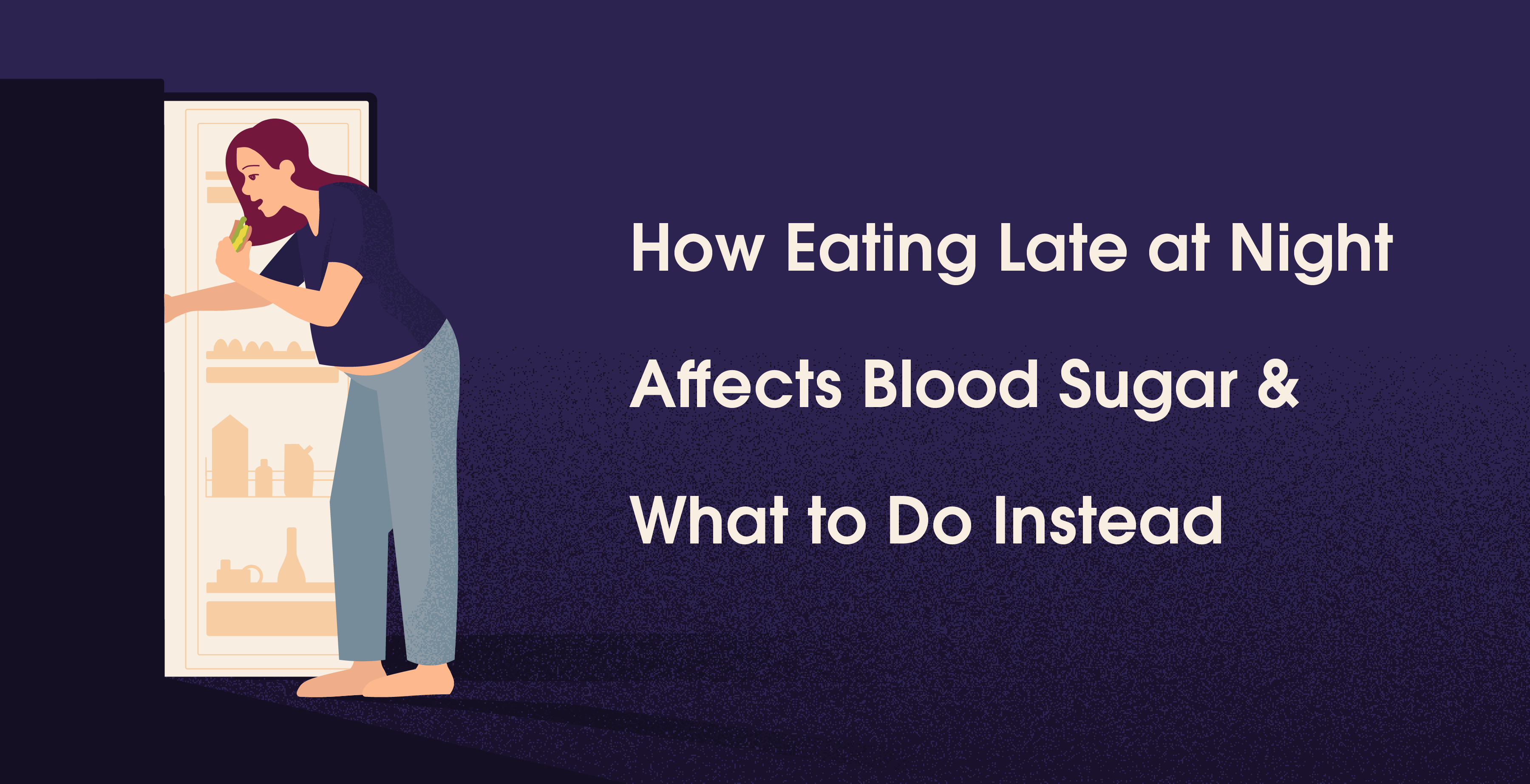

Mar 25, 2025
Sayfali Rawlani
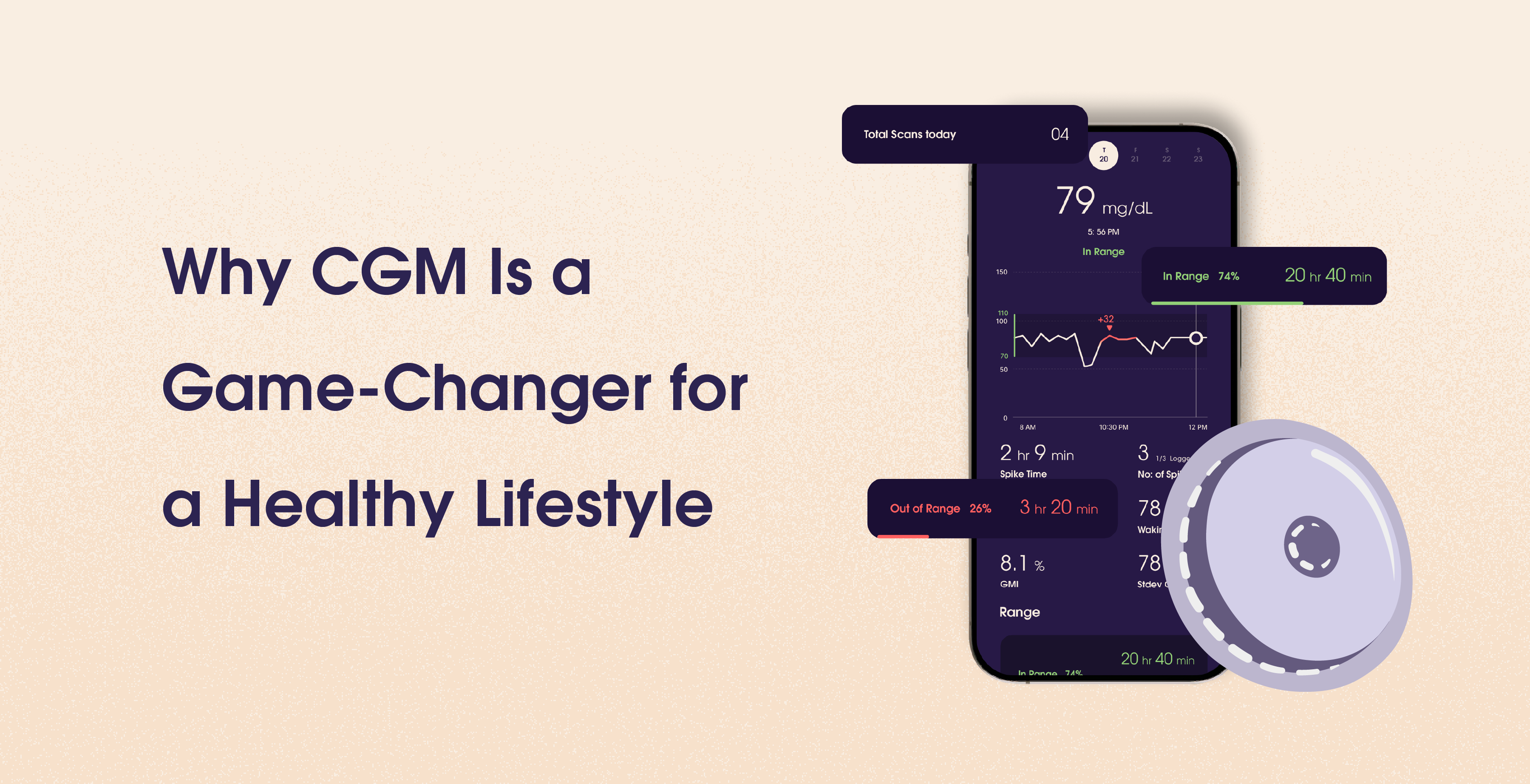

Mar 20, 2025
Sayfali Rawlani
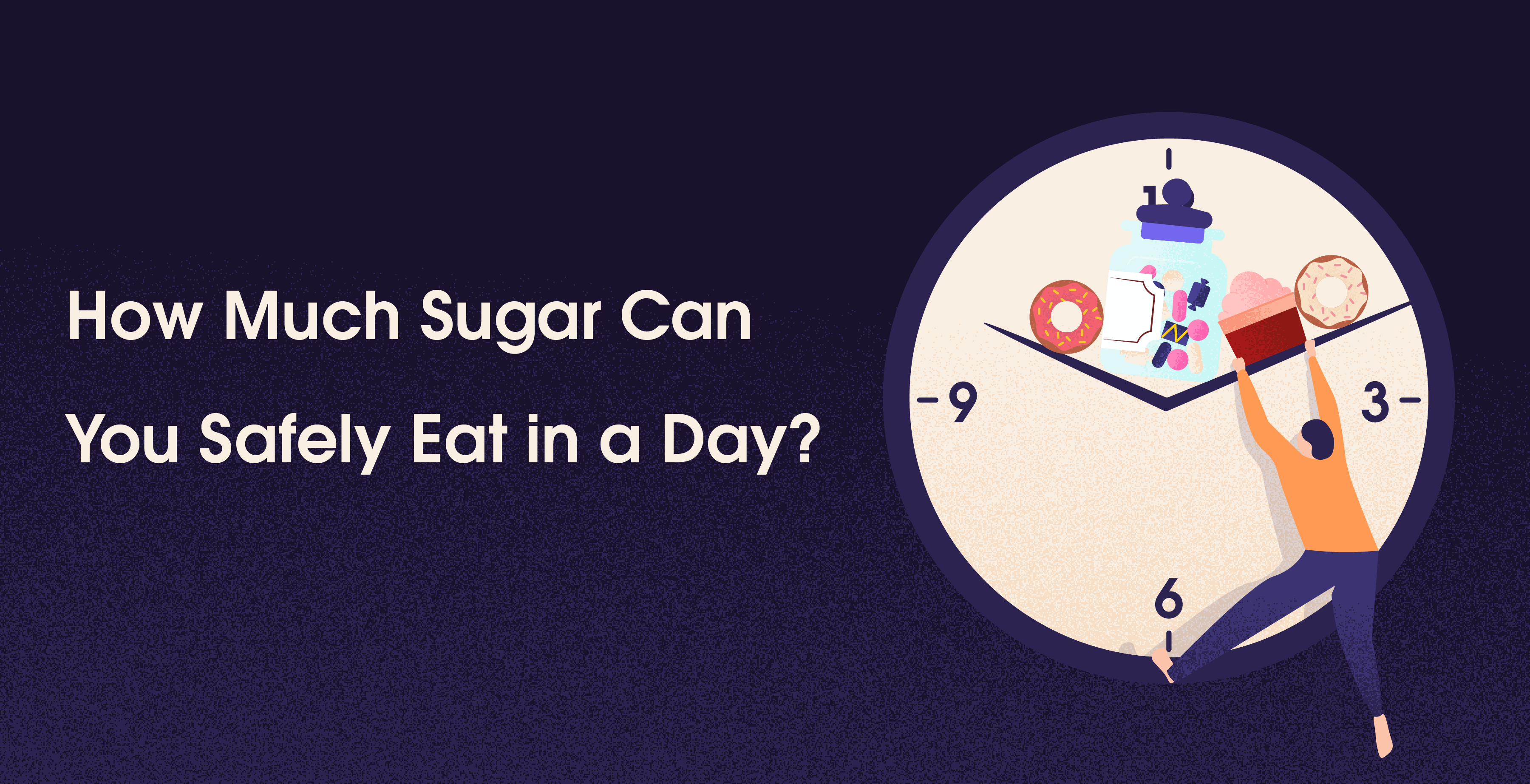

Mar 6, 2025
Sayfali Rawlani



Company
Copyright © 2025 trst health. All right reserved.

